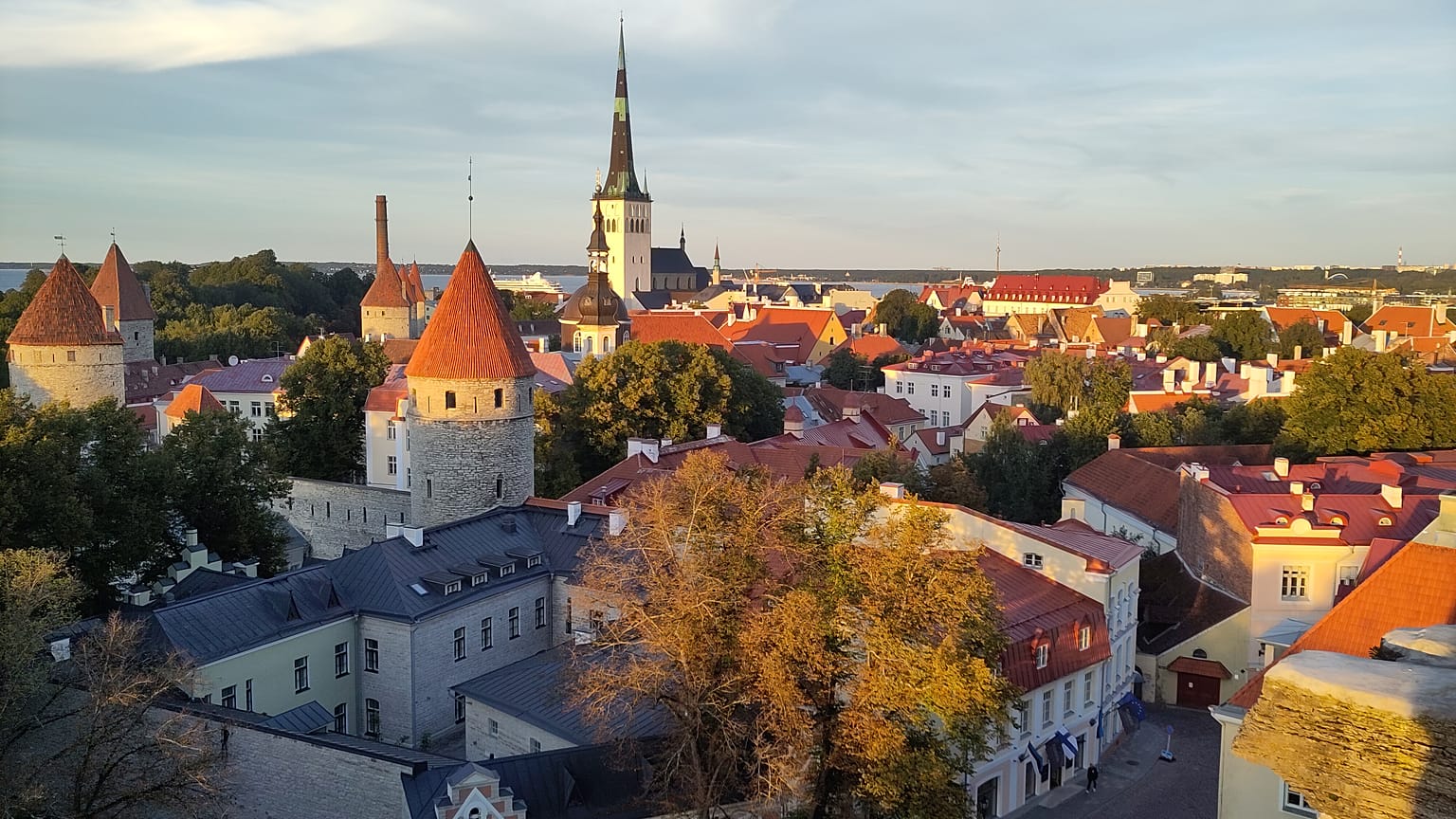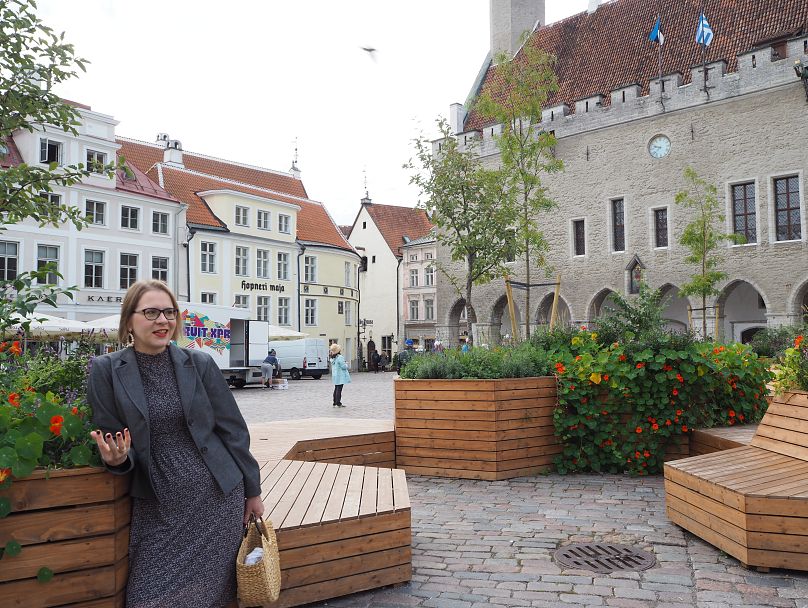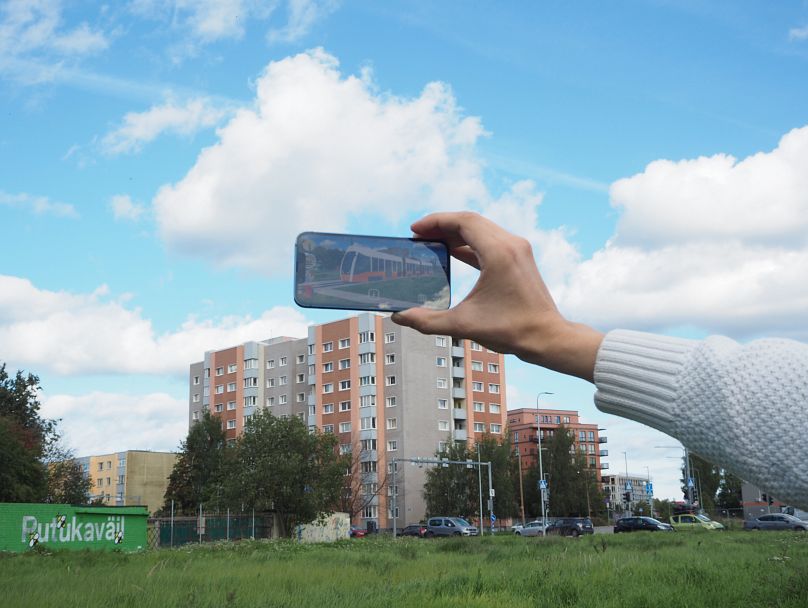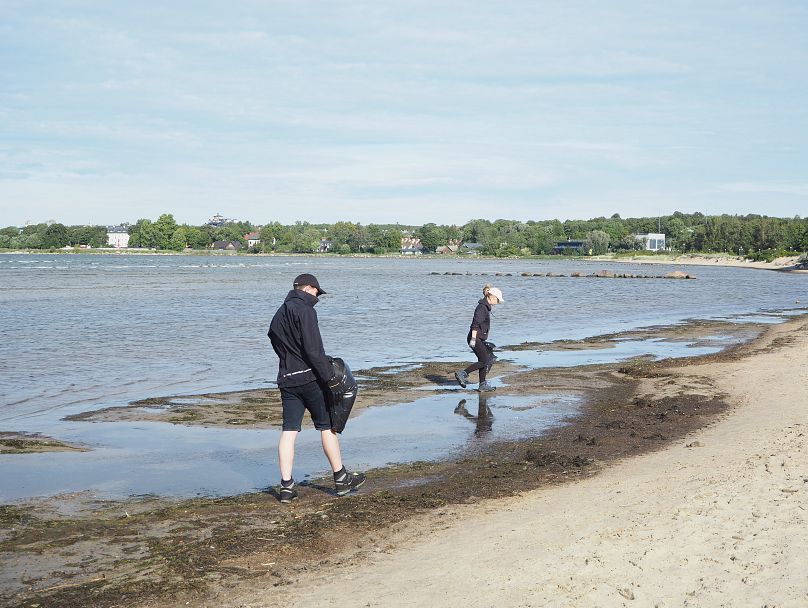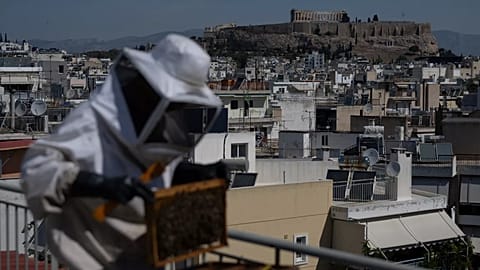As its year in the limelight draws to a close, how has Tallinn improved citizens’ lives and inspired them to take greater care of nature?
Tallinn’s Town Hall square has long been a hive of action. The focal point of the Estonian capital’s beautiful Old Town, it’s been the site of the most important social interactions for centuries; from farmers’ markets to criminal trials and Christmas celebrations.
But for the last 20 years, locals have struggled to do the most simple things here: to pause, sit and chat, without the obligation to buy something from one of the surrounding cafes.
Summer 2023 brought a fresh makeover to the square, however. From June to September, it buzzed with new life as a temporary park, complete with wooden seating, flowers, saplings and even a free library for people to peruse.
“I think people expect a lot of greenwashing from municipalities and are hesitant, but the feedback has been amazing,” says Kaidi Põldoja, head of Tallinn’s urban planning department.
It’s all part of numerous city-wide projects accomplished during Tallinn’s year as European Green Capital. We visited last month to see what the city has achieved while wearing the crown.
What is the European Green Capital?
Run by the European Commission, the European Green Capital (EGC) title is awarded to cities with over 100,000 residents that are actively transitioning towards a more sustainable future.
Tallinn was awarded the environmental prize in 2021, giving it two years to prepare for its time in the limelight plus a €600,000 cheque to help. The idea for the awards first emerged in Tallinn in 2006, during a gathering of European cities, so it’s seen as a homecoming by city officials.
The Spanish city of Valencia is next and, at an awards ceremony in Tallinn on Thursday night, Lithuania’s capital of Vilnius was announced as the 2025 winner.
EGC isn’t just a roll call of progressive cities. The initiative also helps local governments and changemakers to share their knowledge and best practices with each other, from combating pollution to adapting to extreme weather.
“Estonia is small. Tallinn is our only big city so we had no one to learn from besides other European capitals,” says Põldoja.
Having more eyes on Tallinn right now is both useful for making continental connections, and catalysing change at home.
“For me, Green Capital is an attitude,” explains Tallinn’s deputy mayor Vladimir Svet. “An attitude where you take decisions that are long lasting, that might not be popular at the moment, but that are necessary for the city to cut emissions and to become a really green city.”
Green tracks and a Pollinator Highway: How is Tallinn getting greener?
Tallinn’s approach to being the EGC holder revolves around bringing nature into the city and encouraging residents to appreciate it more.
The town square’s floral revamp falls under the city’s ‘Green Tracks’ project, which is introducing greenery into urban spaces all over Tallinn, from housing blocks to traffic islands and bus stop roofs.
Its success hinges on a concept called ‘tactical urbanism’ - a speedy, short-term approach that stops projects getting bogged down in permitting issues.
When it comes to spatial planning, “nothing is the same as it used to be”, says Põldoja. The COVID pandemic and mounting temperatures have underscored the need for quicker solutions.
Fortunately Tallinn’s brightest public architects are up for the challenge. The town square park design cleverly tracks the streets that feed into it, so as not to block any pathlines for people wanting to pass through. The plant boxes are hexagonal - a hint to bees, whose needs were also considered in the pollinator-friendly choice of flowers.
Northwest of the Old Town, forming a 14-kilometre long corridor through six of Tallinn’s eight districts, is a lasting green feat: the Pollinator Highway. Much of it runs along an old brownfield site, where high-voltage power lines have been moved underground.
It’s been a few years in the making, and there’s still a stretch to negotiate with a rail depot area to make this ‘linear park’ complete. “But I like to think that it's all there,” says architect Ivo Arro, “the corridor is there and pollinators and wildlife already use it.”
The ongoing construction is more for humans’ satisfaction, but that’s an important part of the equation too. As north Tallinn’s population grows there’s an increased need for green spaces, to ease pressure on Merimetsa forest.
The highway - bordered by unmowed meadow grass - also takes residents by foot or bike to Tallinn’s first community allotment garden.
Baltic Sea clean ups and a Citizens’ Assembly: How are Tallinners becoming greener?
My ride along the Pollinator Highway starts with a visit to Stroomi Beach, where a handful of conscientious volunteers have devoted their Saturday morning to litter picking.
The Baltic Sea is one of the most polluted seas in the world. Almost landlocked and with around 100 cities on its shores, it's been subject to decades of industrial pollution, munitions dumping and overfishing.
Picking up cigarette butts feels like a drop in the ocean, so to speak, but it’s an important part of Tallinn’s mission to engage Baltic Sea residents in the welfare of this shared natural resource.
Spread out along its coast and surrounding forest, ‘World Cleanup Day’ on 16 September saw over 54,000 people in Estonia clearing up trash from nature. This global day is organised by Estonian non-profit Let’s Do It World, with the aim of getting 5 per cent of the population involved - seen as a tipping point for social change.
There are countless ways that Tallinners will have noticed the influence of EGC status in their lives this year. From a free self-driving bus through Kadriorg Park, to new green labels in their most sustainable restaurants. Perhaps the most notable was the absence of plastic at the nation’s annual Youth Song and Dance Festival in July when more than 100,000 festival goers were catered for using only reusable dishes, saving an estimated 3.5 tonnes of waste.
And, crucially, there’s an open invitation to Tallinn’s 461,000 strong population to become co-creators in its greener future. In a newly-opened ‘participation hub’ next to Tallinn City Office, people can drop by to discuss urban plans and - thanks to Estonia’s digital expertise - use virtual reality tools to envisage them.
A select group of Tallinners will have an even greater role to play during the city’s first Citizens Assembly. Over the next month, 60 people from across society will ponder the question, ‘How can we link Tallinn’s green spaces into an inviting urban whole?’
Following presentations from scientists and other experts, this ‘mini Tallinn’ will put forward proposals; the city government is obliged to consider each idea that gets over 80 per cent votes.
Unfinished business: What’s the future for green Tallinn?
One year is a short time to get results, but the work certainly won’t stop in December. As Arro says of the Pollinator Highway - a strip of land within the larger living city: "It's already finished and it never will be finished.”
Though making cities more sustainable is an unending process, being European Green Capital has saved Tallinn’s policymakers a lot of time. Years that would usually be spent on lengthy discussions, decision making and persuading people, says Svet.
“As a political cycle in Estonia is four years long, I always say that the title of the Green Capital has helped us to save four years that would go on the same decisions one way or another,” he explains.
“But now we were able to make those decisions more smoothly, and it means that we have a chance in this race that the whole country, the whole region and maybe the whole world is now facing.”















